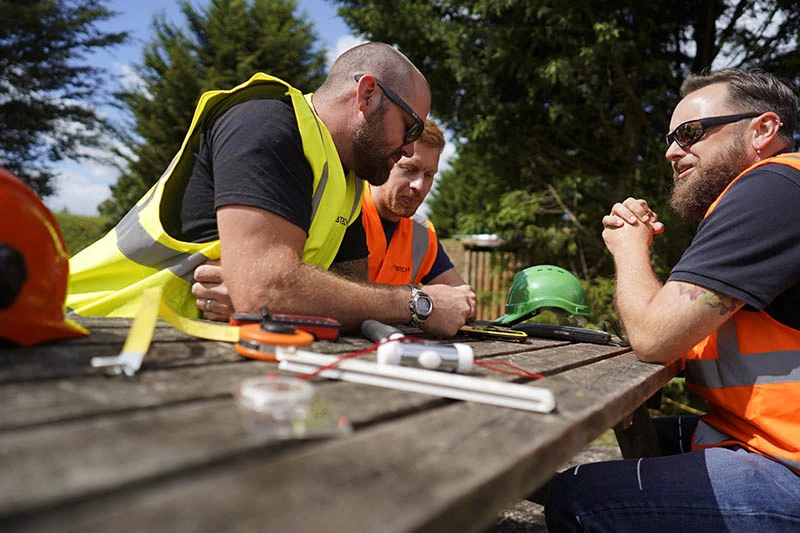The Evolving Landscape of London
A city defined by its contrasts, on one hand, London is a place of ancient monuments and historic character, with landmarks such as St Paul’s Cathedral, Westminster Abbey and the Tower of London anchoring its identity. On the other hand, it’s a city that constantly reinvents itself, with new development reshaping the skyline year after year. The Shard, the Walkie-Talkie and Battersea Power Station’s redevelopment show how quickly London evolves.
The River Thames ties the city together, weaving past neighbourhoods that range from Victorian terraces to modern apartment blocks. Despite this intensity of urban form, London is also one of the greenest capitals in Europe. Richmond Park, Hampstead Heath, Greenwich Park and Epping Forest provide vast stretches of open space, while countless smaller gardens and squares add character to local communities. Together, these features form a complex existing landscape that makes every planning decision sensitive.
Landscape assessments help developers understand this delicate balance. With so much heritage to protect and such high expectations from local authorities and community groups, any change to the city’s environment must be carefully considered.
Why Landscape Assessments Matter in London
Planning in London is unlike anywhere else in the UK. Development proposals face close scrutiny not just because of scale, but because of the city’s symbolic importance. A building that changes views of the Thames, alters the character of a conservation area or overshadows a public space can trigger strong objections from both residents and planning consultants.
A landscape and visual impact assessment (LVIA) often plays a central role in planning decisions when it comes to applying for planning permission from the local planning authority. By showing how visual matters have been evaluated and managed through a landscape-led approach, an LVIA provides reassurance to local authorities that negative effects have been properly considered.
The need is especially clear for large-scale schemes such as infrastructure upgrades, new housing districts or even wind farms on the city’s edge. Such things can carry possible negative effects on both the character of the land and the way people experience it. Public inquiries often rely on LVIA reports and expert witnesses to weigh up evidence, particularly where community groups have raised concerns.
In short, without a clear LVIA, the planning project risks a chance of delays, planning refusals and costly redesigns. With one, developers can demonstrate responsibility, address potential impacts, enhance landscape design, and strengthen their case for approval.
What Happens in a Landscape Visual Impact Assessment
Also simply known as a landscape visual impact assessment, a landscape and visual impact assessment (LVIA) is a structured and two-part process. First, landscape architects carry out a landscape character assessment, involving studying the baseline of the existing landscape: its landforms, vegetation, watercourses, open space and cultural or historic features. In London, this might mean evaluating the impact of a new tower on protected views or the way a housing scheme interacts with nearby parks and heritage assets.
Next comes the visual impact assessment, looking at visual aspects from the perspective of real people. How will the development appear from Blackfriars Bridge, Primrose Hill or residential streets nearby? Will it dominate views, complement them or fade into the background? Such questions are central to understanding visual matters and the potential negative impacts of a project.
To give a full picture, landscape assessments are often paired with environmental impact assessments (EIA). An EIA ensures that changes to the landscape are not considered in isolation but alongside issues such as biodiversity, air quality and noise.
The final LVIA report then brings everything together. It sets out the likely effects, the significance of those effects and practical mitigation measures. It could include screening with planting, adjusting building heights, or refining the layout to reduce harm. Developers and planners use these findings to negotiate with local authorities and demonstrate that the development has been shaped with care.
Speak to Our Team About Your London Project
If you’re preparing development proposals in London, an LVIA could be the key to getting them approved. At Arbtech, our landscape architects and planning consultants have extensive experience across various sectors, helping clients navigate the planning process, planning applications, public inquiries and large-scale schemes.
We’ll assess potential impacts, recommend mitigation measures and deliver the clear and reliable evidence local authorities expect. For a free quote, simply call, email, message us on social media or complete our online form. We’ll arrange a site visit and make sure matters that are primarily visual never stand between you and a successful outcome.


